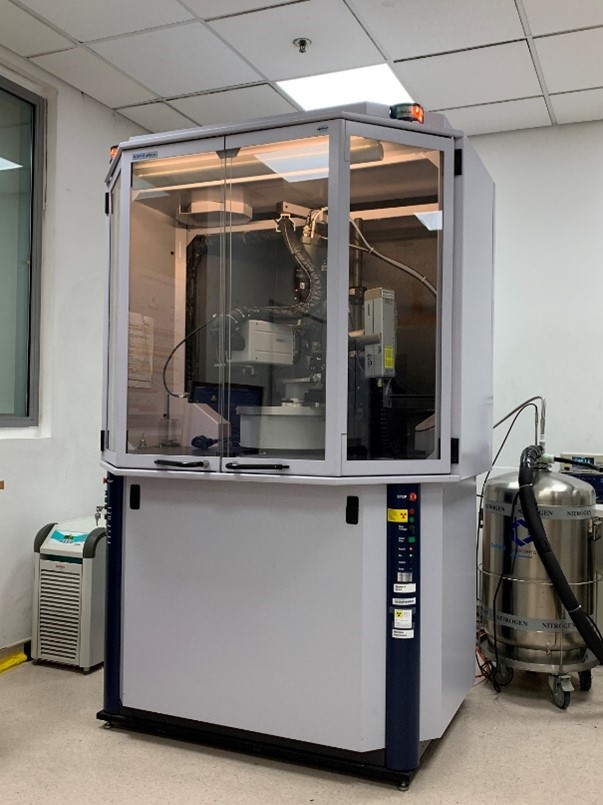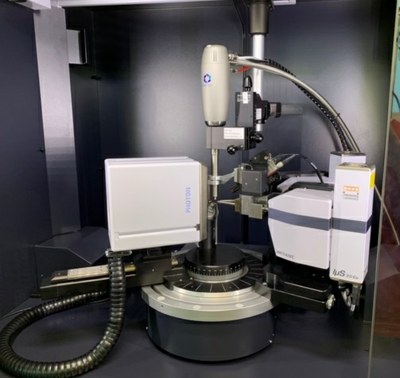
Supermini 200 is a benchtop sequential wavelength dispersive X-ray fluorescence (WDXRF) spectrometer with high resolution and lower limits of detection for elemental analysis of Fluorine (F) through Uranium (U).
#Bruker apex 3 users manual software
The frame buffer computer is provided with APEX III software for sample centering, data collection (sample unit cell determination, and detailed structure determination), data integration, absorption correction, and structure determination and refinement.ħ. The detector (Photon 100 CMOS detector) is placed at about 5 – 6 cm from the sample. The sample temperature can be varied from 100 – 500 K using Cryostream controller (Oxford Instruments).
#Bruker apex 3 users manual manual
The sample is optically aligned using Video camera and a manual control module. The single crystal is mounted on the tip of a glass fiber or a nylon loop affixed to a Goniometer head will be attached to a fixed χ, 3-axis goniometer. This instrument delivers intense, monochromatic beam of Mo Kalpha radiation (0.7107 Å) produced using Graphite monochromator from a sealed Mo X-ray tube and collimated with a pinhole collimator. Smart Apex Single Crystal Diffractometer is a dedicated instrument for Crystallography studies (absolute structure determination using a single crystal sample). Bruker Photon 100 Single Crystal Diffractometer: The research was performed in part in the Nebraska Nanoscale Facility: National Nanotechnology Coordinated Infrastructure and the Nebraska Center for Materials and Nanoscience (and/or NERCF), which are supported by the National Science Foundation under Award ECCS: 2025298, and the Nebraska Research Initiative.Ħ. The following instruments are available at the NCMN X-ray Scattering Facility: (1) Rigaku SmartLab Diffractometer (2) Bruker D8 Discover Diffractometer (3) PANalytical Empyrean Diffractometer (4) Rigaku D-Max/B Diffractometer (5) Rigaku Multiflex diffractometer and (6) Bruker Photon 100 Single Crystal diffractometer.Īgencies including NSF and the University providing partial support of our Nebraska Nanoscale Facilities and NCMN Facilities require that the following words be included at the end of any Acknowledgement section of a paper in which experimental work was done in NNF-NCMN facilities: X-ray crystallography is unique in capabilities to unravel the absolute crystal structure from single crystal diffraction. Grazing incidence in-plane diffraction provides valuable information of the structural order in the plane of the film.

Advanced hardware and high resolution optics are available to investigate thin films, multilayers, highly oriented and epitaxial thin films. Powder diffraction is routinely used for phase identification, finding relative ratio of phases, structural phase transitions, percentage of crystallinity analysis of partially crystalline materials, etc.

Non-ambient powder and single crystal diffraction is also available at selected temperature range. The specific applications include Powder diffraction, x-ray reflectometry, small angle scattering, pole figure, reciprocal space mapping, Grazing incidence in-plane diffraction, x-ray crystallography etc. The NCMN X-Ray Structural Characterization Facility is dedicated to materials identification and characterization through non-destructive, X-Ray Diffraction (XRD) technique.


 0 kommentar(er)
0 kommentar(er)
